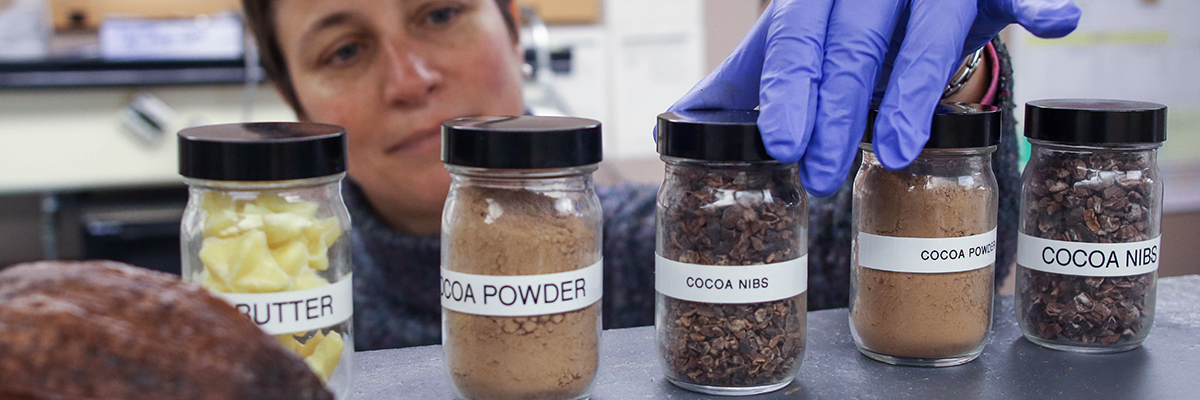The Last Word by Silvana Martini

photo by McKay Jensen

When I tell people that I teach a class about chocolate their first question is: “The whole semester?” Followed by: “What can you possibly talk about for the entire semester?” I have always been amazed by this reaction since I can assure you that an entire career could be spent studying, researching, and understanding chocolate.
As a food scientist, I find chocolate to be a fascinating material. Chocolate products that we consume today are very different from those that the Olmecs, Mayans, and Aztecs prepared thousands of years ago. While pre-conquest civilizations consumed a grainy chocolate mixed with corn and spices, modern chocolate has evolved over the past 100 years into a sweet, smooth, and delicious confection. Changes in chocolate products were possible thanks to the dedication and perseverance of many scientists who have been captivated by chocolate’s complexity. Millions of farmers in West Africa and in tropical areas grow the cocoa tree, Theobroma Cacao, harvest the seeds called cacao beans, and ensure proper fermentation and drying which are vital steps for flavor development. Chocolate scientists have optimized the processes of roasting, grinding, and refining of cocoa beans to obtain the chocolate product with which we are familiar.
Our laboratory in the food science program at Utah State University studies crystallization of fats, such as cocoa butter, which is a primary component of chocolate. The way cocoa butter crystallizes impacts the flavor and mouthfeel of chocolate as well as its shelf life. Perhaps you have noticed a “white dust” on top of older chocolate. This is called fat bloom and is caused by unwanted transformation of cocoa butter crystals. Fat bloom is a significant problem for the confectionery industry and many scientists around the world are working toward solving this problem.
Utah has a vibrant confectionery industry with more than 50 confectionery companies registered in the state, and over 60 percent of these are chocolate manufacturers. I am fortunate to share my passion for the topic of chocolate with hundreds of students enrolled in the course Chocolate: Science, History, and Society. Students learn the history of chocolate, the role that science and technology plays in the development of chocolate, and how chocolate is tied to societal issues and world politics. The course began fall semester of 2015, with the goal of inspiring future food scientists and educating students about the chocolate industry. Few higher education institutions offer courses pertaining to chocolate science, especially in the western United States. The food science program at USU has a vision to offer a comprehensive, university-level, confectionery program that will train students in all aspects of the industry.
Chocolate is a sweet treat that we often take for granted and that many consume on a regular basis. Next time you indulge in a chocolate treat, I hope you will think about the complex process that brought that product to market and the millions of people involved worldwide.

